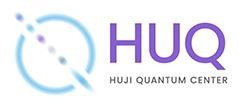
Using modern micro and nano-fabrication techniques combined with superconducting materials we realize quantum electronic circuits in which we create, store, and manipulate individual microwave photons. The strong interaction of photons with superconducting quantum two-level systems allows us to probe fundamental quantum effects of microwave radiation and also to develop components for applications in quantum technology. Previously we have realized on-demand single photon sources which we have characterized using correlation function measurements [1] and full quantum state tomography [2].
For this purpose we have developed efficient methods to separate the quantum signals of interest from the noise added by the linear amplifiers used for quadrature amplitude detection [3] We now regularly employ superconducting parametric amplifiers [4] to perform nearly quantum limited detection of propagating electromagnetic fields. These enable us to probe the entanglement which we generate on demand between stationary qubits and microwave photons freely propagating down a transmission line [5]. Using two independent microwave single photon sources, we have recently performed Hong-Ou-Mandel experiments at microwave frequencies [6] and have probed the coherence of two-mode multi-photon states at the out-put of a beam-splitter. The non-local nature of such states may prove to be useful for distributing entanglement in future small-scale quantum networks.
[1] D. Bozyigit et al., Nat. Phys. 7, 154 (2011)
[2] C. Eichler et al., Phys. Rev. Lett. 106, 220503 (2011)
[3] C. Eichler et al., Phys. Rev. A 86, 032106 (2012)
[4] C. Eichler et al., Phys. Rev. Lett. 107, 113601 (2011)
[5] C. Eichler et al., Phys. Rev. Lett. 109, 240501 (2012)
[6] C. Lang et al., Nat. Phys. 9, 345–348 (2013)

